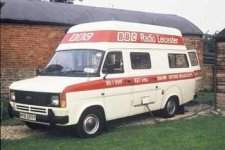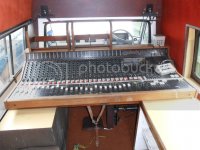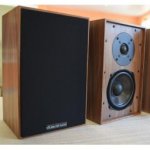I linked a recent Stereophile article in this thread:
Can one build a better (non) LS3/5A speaker based on T27s & B110s?
Falcon "Gold Badge" LS3/5a loudspeaker Measurements | Stereophile.com
Can one build a better (non) LS3/5A speaker based on T27s & B110s?
Falcon "Gold Badge" LS3/5a loudspeaker Measurements | Stereophile.com
I made an homage to LS3/5A here called the “Rockville”:
RST28F and DC130A Foamcore Homage to LS3/5A
It is a different XO and different drivers but the measured step response is very similar. Easy to find and inexpensive drivers plus an easy to drive impedance curve. Sounds great, as confirmed by multiple builders.
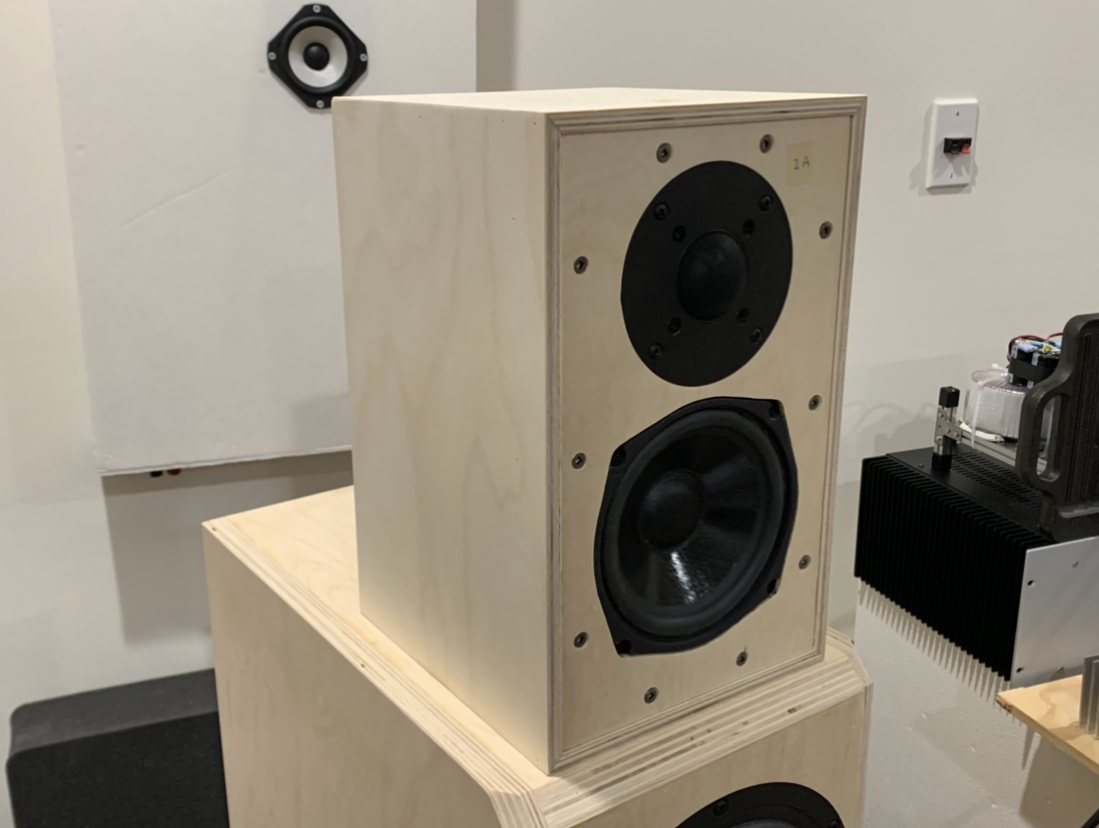
Rockville measured step response:

Stereophile measured step response of Sterling variant LS3/5A:
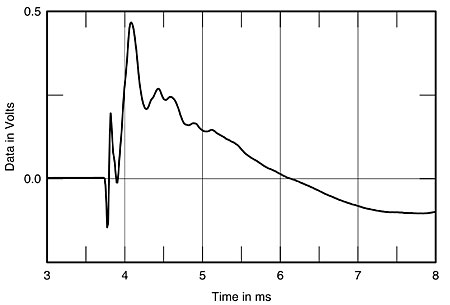
Measured impedance of the Rockville:
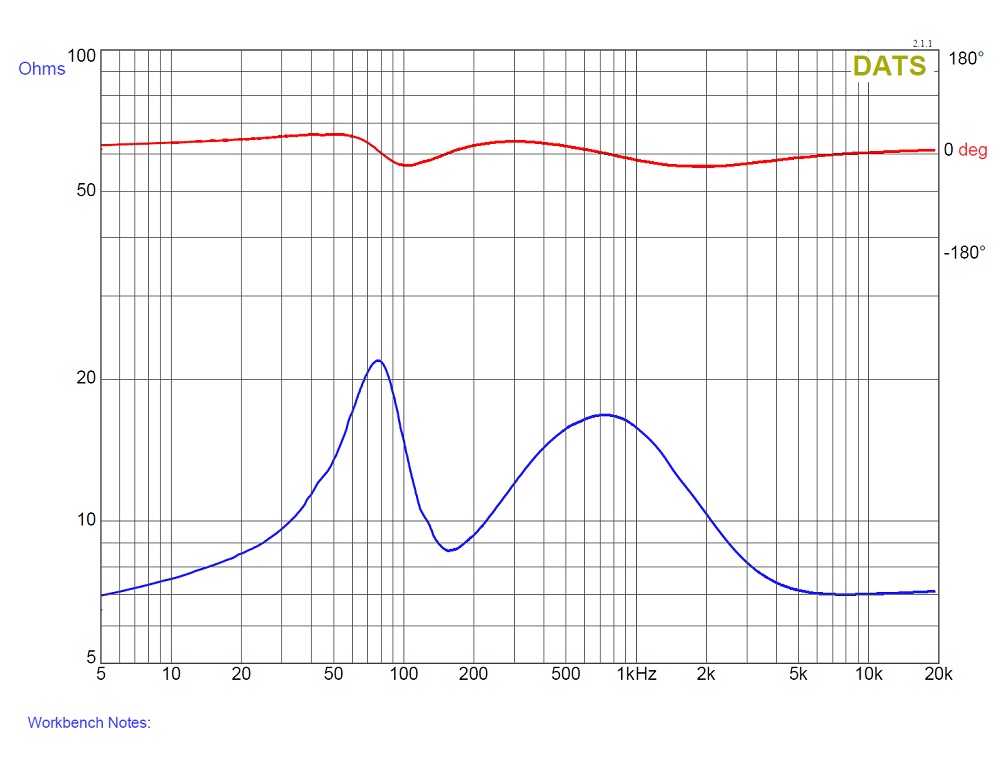
RST28F and DC130A Foamcore Homage to LS3/5A
It is a different XO and different drivers but the measured step response is very similar. Easy to find and inexpensive drivers plus an easy to drive impedance curve. Sounds great, as confirmed by multiple builders.
Rockville measured step response:
Stereophile measured step response of Sterling variant LS3/5A:

Measured impedance of the Rockville:
I just saw this and have a pair of "100%" clones using the 15ohm(?) and would like to add my opinion. This is almost a collectors speaker because you might not want it as your only speaker because it cant really do what most modern speakers do such as low bass response and high dynamic range. However, the reason that I've kept them after selling many other small speakers is a few things that I'll list:
1. When used with an amplifier that does not have issues with the high impedance of the speaker, you get very clear, cohesive and believable upper bass to upper midrange. At least as good as any small speaker for any price today that I have personally heard but only up to medium listening levels.
2.The cabinet is a real piece of audio engineering. And it works. It feels like a large brick when you handle it and, as opposed to other small speakers I have heard, it has very little, if any noticeable cabinet resonances, at least with the music I listen too.
3. Because of the reasonably linear response of the drivers, the ideal bass damping to provide a convincing little bump that does not sound smeared or delayed, the quiet cabinet and the complex crossover for good phase alignment (or at least a 4th order slopes to keep the phase issues in a tiny window) and the felt square around the tweeter, it produces an illusion of a 3 dimensional space that is floating in the air in front of you without smearing or foggy, phasey sound stage effects. It also has a nice depth illusion and sounds are convincing but with reduced dynamic compared to larger speakers. It is very hard to pinpoint the speaker, and if you close your eyes the illusion gets better and it really appears to the brain like the sounds are perfectly arranged in a 3 dimensional mini-amphitheater in front of you. Really cool trick and none of my other speakers do that. So that's why I keep them.
1. When used with an amplifier that does not have issues with the high impedance of the speaker, you get very clear, cohesive and believable upper bass to upper midrange. At least as good as any small speaker for any price today that I have personally heard but only up to medium listening levels.
2.The cabinet is a real piece of audio engineering. And it works. It feels like a large brick when you handle it and, as opposed to other small speakers I have heard, it has very little, if any noticeable cabinet resonances, at least with the music I listen too.
3. Because of the reasonably linear response of the drivers, the ideal bass damping to provide a convincing little bump that does not sound smeared or delayed, the quiet cabinet and the complex crossover for good phase alignment (or at least a 4th order slopes to keep the phase issues in a tiny window) and the felt square around the tweeter, it produces an illusion of a 3 dimensional space that is floating in the air in front of you without smearing or foggy, phasey sound stage effects. It also has a nice depth illusion and sounds are convincing but with reduced dynamic compared to larger speakers. It is very hard to pinpoint the speaker, and if you close your eyes the illusion gets better and it really appears to the brain like the sounds are perfectly arranged in a 3 dimensional mini-amphitheater in front of you. Really cool trick and none of my other speakers do that. So that's why I keep them.
Last edited:
And I should be more clear with the faults, which may or may not be a deal breaker for you:
1. Medium to medium-high? listening levels only. I have listened to them to levels I would consider as "loud" and I haven't heard the B110 bottom out yet but some people say that it happens with their speakers? Maybe I don't listen as loud as some people?
2. The tweeter sounds not perfect, and not as good as most good tweeters today but this can be tamed with DSP and that is how I like to do it. Or if i'm feeling romantic, ill plug in the EL34 tube amp to darken the response and add a bit of harmonic distortion to the bass, making it sound more balanced and beefy. Either way is good but I have been thinking about trying a few small tweeters to replace it without messing up something.
3. The bass is limited but the hump does balance the system out and creates the illusion of more bass than even the in-room measurement would suggest. BUT if you want flat bass down to 40-50hz these wont do it for you.
4. Moving closer to wall improves bass but messes up everything else. These perform much better away from the wall in my opinion. I think it is the small drivers and small baffle that gives this speaker a wide dispersion (and the felt acts like a crude waveguide) and therefore it needs space away from walls to allow it create the effect, otherwise the early reflections destroy the illusion.
1. Medium to medium-high? listening levels only. I have listened to them to levels I would consider as "loud" and I haven't heard the B110 bottom out yet but some people say that it happens with their speakers? Maybe I don't listen as loud as some people?
2. The tweeter sounds not perfect, and not as good as most good tweeters today but this can be tamed with DSP and that is how I like to do it. Or if i'm feeling romantic, ill plug in the EL34 tube amp to darken the response and add a bit of harmonic distortion to the bass, making it sound more balanced and beefy. Either way is good but I have been thinking about trying a few small tweeters to replace it without messing up something.
3. The bass is limited but the hump does balance the system out and creates the illusion of more bass than even the in-room measurement would suggest. BUT if you want flat bass down to 40-50hz these wont do it for you.
4. Moving closer to wall improves bass but messes up everything else. These perform much better away from the wall in my opinion. I think it is the small drivers and small baffle that gives this speaker a wide dispersion (and the felt acts like a crude waveguide) and therefore it needs space away from walls to allow it create the effect, otherwise the early reflections destroy the illusion.
Last edited:
I made an homage to LS3/5A here called the “Rockville”:
RST28F and DC130A Foamcore Homage to LS3/5A
It is a different XO and different drivers but the measured step response is very similar. Easy to find and inexpensive drivers plus an easy to drive impedance curve. Sounds great, as confirmed by multiple builders.
Rockville measured step response:
Stereophile measured step response of Sterling variant LS3/5A:
Measured impedance of the Rockville:
Cool speaker. I have used the RS28F and it seems to not have the same dispersion of the original KEF tweeter due to difference in diaphragm size and so some of the imaging is not as good in my experience. I tried RS28F with the felt and it was cleaner but still did not give the same result. I have been thinking about small dome seas units if I were to have time to try a new tweeter.
Also, the felt adds a lot to the imaging and can improve most tweeters on baffles by reducing baffle edge reflections. Everybody should try this. Just get 25mm wide(one inch) and 10-12mm (half-inch) high wool felt ring around the tweeter, not too close to the dome. Asymmetrical shapes work even better.
Midbass is probably more interchangeable however the plastic cone of the KEF B110 has a certain sound and damping properties (as well as a clever bass alignment) that work well for convincing upper bass and midrange reproduction. Though people have said good things about the monacor unit as a replacement for the same cabinet and as a bonus, it has better bass performance.
PS love what you did with the step response, very clever. I wonder how it would sound against an original or clone. It does seem to show the LS3/5A taking longer to recover to baseline. Not sure how that would impact the sound. Yours might sound clearer I imagine.
Last edited:
Has anyone ever heard the Ergo IX speakers? They were designed to be updated and improved versions of LS3/5A or Linn Kann type speakers. They are also sealed and use a Scanspeak woofer and Morel horn loaded tweeter. I built a pair and must say they are pretty exceptional. Better than my KEF 101s.
Building the Ergo E-IX mini-monitor loudspeaker system | pink fish media
Building the Ergo E-IX mini-monitor loudspeaker system | pink fish media
The brief of the BBC was to have the smallest sized speaker that could be used for monitoring in their broadcast vans. Why some think that these will work in anything larger than a 9' x 12' bedroom sized environment is beyond me.
In Asia they live in shoebox sized apartments, that's why they are popular over there.
You'll have to remember its horses for causes: in a very small room you cannot fit a Klipsch La Scala, nor use some stand mounts that have to sit at least a meter from the wall.
(See the speaker stand in the corners at the top? That's where they go...)
In Asia they live in shoebox sized apartments, that's why they are popular over there.
You'll have to remember its horses for causes: in a very small room you cannot fit a Klipsch La Scala, nor use some stand mounts that have to sit at least a meter from the wall.
(See the speaker stand in the corners at the top? That's where they go...)
Attachments
SBAF compared a Chartwell LS3/5A against my homage to the same speaker in this review here.Cool speaker. I have used the RS28F and it seems to not have the same dispersion of the original KEF tweeter due to difference in diaphragm size and so some of the imaging is not as good in my experience. I tried RS28F with the felt and it was cleaner but still did not give the same result. I have been thinking about small dome seas units if I were to have time to try a new tweeter.
Also, the felt adds a lot to the imaging and can improve most tweeters on baffles by reducing baffle edge reflections. Everybody should try this. Just get 25mm wide(one inch) and 10-12mm (half-inch) high wool felt ring around the tweeter, not too close to the dome. Asymmetrical shapes work even better.
Midbass is probably more interchangeable however the plastic cone of the KEF B110 has a certain sound and damping properties (as well as a clever bass alignment) that work well for convincing upper bass and midrange reproduction. Though people have said good things about the monacor unit as a replacement for the same cabinet and as a bonus, it has better bass performance.
PS love what you did with the step response, very clever. I wonder how it would sound against an original or clone. It does seem to show the LS3/5A taking longer to recover to baseline. Not sure how that would impact the sound. Yours might sound clearer I imagine.
In England that is a not unusual size for a living room in some areas...Why some think that these will work in anything larger than a 9' x 12' bedroom sized environment is beyond me.
In England that is a not unusual size for a living room in some areas...
or in California where homes are insanely expensive.
I’ve heard some BBC speakers which were really nice.
most reproduce voices supremely well but lack in other aspects.
the best of the bunch imho are Graham ones.
might be the birch ply they use which adds stiffness.
because those have the least bass bloat.
stirlings are great as well.
most reproduce voices supremely well but lack in other aspects.
the best of the bunch imho are Graham ones.
might be the birch ply they use which adds stiffness.
because those have the least bass bloat.
stirlings are great as well.
I mentioned the Wilmslow Audio LS3 kit in post #9.
I see they have now introduced a PLUS version with upgraded treble and mid/bass units - "Ideal for small to medium sized rooms."
https://wilmslowaudio.co.uk/stand-m...helf-loudspeaker-ls3-plus-kit-without-cabinet
I see they have now introduced a PLUS version with upgraded treble and mid/bass units - "Ideal for small to medium sized rooms."
https://wilmslowaudio.co.uk/stand-m...helf-loudspeaker-ls3-plus-kit-without-cabinet
Attachments
The BBC spec for LS3/5A requires them to made of birch ply and beechwood battens.I’ve heard some BBC speakers which were really nice.
most reproduce voices supremely well but lack in other aspects.
the best of the bunch imho are Graham ones.
might be the birch ply they use which adds stiffness.
because those have the least bass bloat.
stirlings are great as well.
I was selling these things brand new. Quite a few different brands. It, like the QUAD 57 was a love-hate relationship. They did some things well, but often fell on their faces.
A set of Rogers LS3/5A using a 13” trini was a practical lesson on why magnetic sheiding.
Within the last decade i had the opportunity to restore a pair of LS3/5A that he had acquired significantly screwed up. I restored them, comparison with a stock set showed them to be well done.
In a comparison with a similar size 1-way diy i had kicking around, i found them quite boxy. A feeling i always had, but 30-some years later i know better what it is.
I have not heard any of the “clones” but i strongly suspect that with today’s drivers, tools, and talent, that any number of them will smoke teh LS3/5A sonically, but nothing will bring the same nostalgia and vintage value.
dave
A set of Rogers LS3/5A using a 13” trini was a practical lesson on why magnetic sheiding.
Within the last decade i had the opportunity to restore a pair of LS3/5A that he had acquired significantly screwed up. I restored them, comparison with a stock set showed them to be well done.
In a comparison with a similar size 1-way diy i had kicking around, i found them quite boxy. A feeling i always had, but 30-some years later i know better what it is.
I have not heard any of the “clones” but i strongly suspect that with today’s drivers, tools, and talent, that any number of them will smoke teh LS3/5A sonically, but nothing will bring the same nostalgia and vintage value.
dave
Last edited:
- Home
- Loudspeakers
- Multi-Way
- BBC LS3/5a Original v DIY clones

